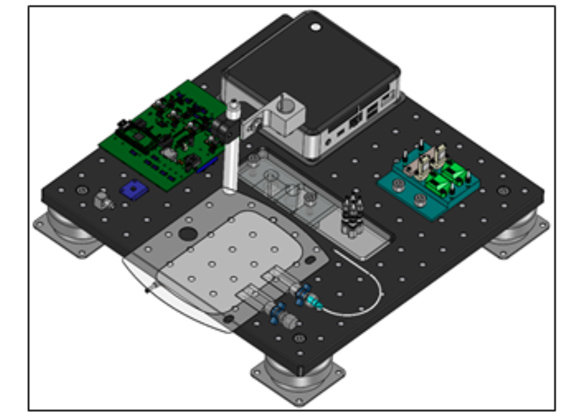BioChip SubOrbitalLab: An Automated Microfluidic and Imaging Platform for Live-Cell Investigations in Microgravity
PI: Daniel O'Connell, Michael Franklin (Co-I), HNu Photonics LLC
PI: Daniel O'Connell, Michael Franklin (Co-I), HNu Photonics LLC

- TA06 Human Health, Life Support and Habitation Systems
BCSOL is composed of three sub-systems: Imaging, Microfluidics and the BioChip. This project supports the testing and validation of all three sub-systems. Briefly, two BioChip prototypes will be tested for their ability to support healthy cell cultures and promote optimal fluid mixing upon automated delivery into each BioChip well. Both BioChips will have a 2-well geometry, however one BioChip will characterize fluid mixing without hollow fibers while the other will utilize hollow fibers to reduce fluid flow velocity and, therefore, fluid shear stress on live-cell cultures. Furthermore, the proposed experiments will demonstrate that BCSOL is capable of characterizing neuron morphology and microglia phagocytosis in real-time with fluorescence microscopy utilizing the Imaging sub-system.
The test flights will achieve the following objectives to advance BCSOL from TRL-4 to TRL-7: 1) validate BioChip designs to maintain a healthy cell culture environment and characterize cell function through launch, microgravity and return, 2) validate microfluidic manifold design for automated fluid delivery while in microgravity, 3) quantify fluid mixing dynamics in microgravity and 4) validate flight durability of all components.
BCSOL will offer government, academic and industry investigators the unique capability of assaying live-cell processes during sub-orbital flights to advance our understanding of microgravity on human physiology.
Technology Details
-
Selection DateREDDI-F1-16B (Jan 2017)
-
Program StatusActive
- 1 sRLV
Development Team
-
PIDaniel O'Connell
-
PI Organization
-
Co-IMichael Franklin
-
Co-I Organization
-
SponsorHNU Photonics LLC
-
More Information

